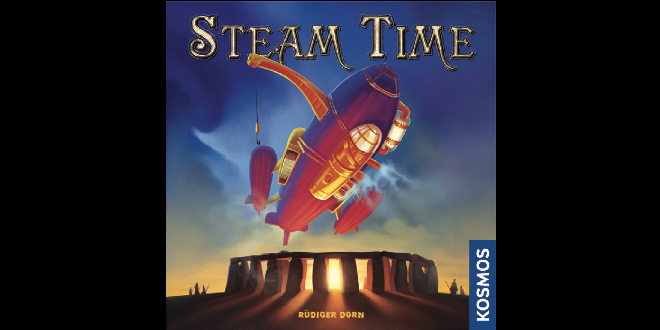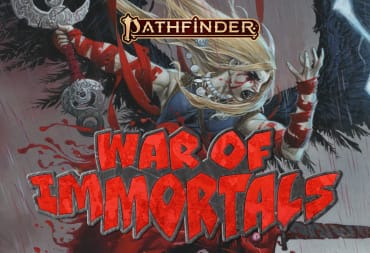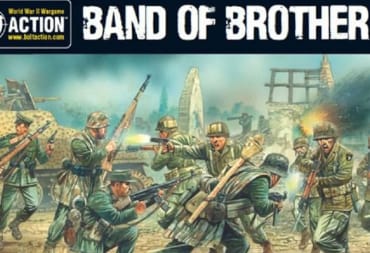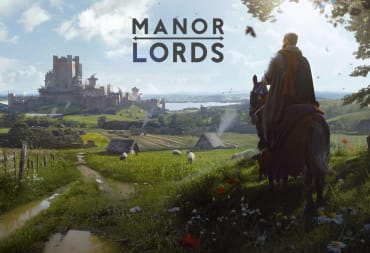Theme and boardgames have an odd relationship. By their very nature, just about every boardgame is going to be an abstraction of almost any theme attached to it, but some games do a really good job of feeling thematic, while others simply use it as window dressing for a series of unrelated activities and mechanics. The games that place emphasis on mechanics over theme are generally called Euro games, and Steam Time fits comfortably into the Euro game category. The game uses a time travel conceit to justify some of its mechanics, and while the gameplay doesn't really make the players feel as if they are adventuring through time, the theme is pleasant and the art is very pretty, and both the mechanics and theme work well enough together to mesh into a really fun gaming experience.
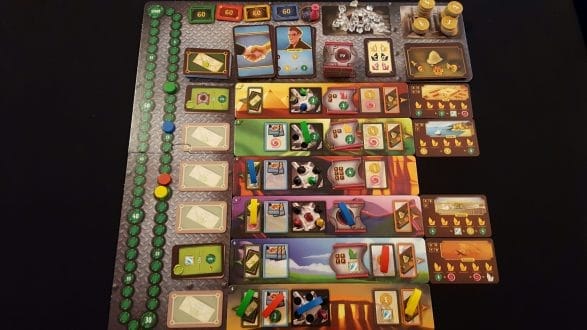
Steam Time is immediately eye catching thanks to its oddly shaped, modular game board and vibrant, stylized art. The story behind the game is that each player has been tasked to travel through time and space in order to earn the most Esteem (read; points) because ... reasons, and while the story doesn't really matter, it's a fun worker placement, resource management game with a few interesting dashes of engine building and board-shifting. While there are many familiar mechanics in the game, Steam Time manages to mix them together in such a way that it feels fresh and interesting.
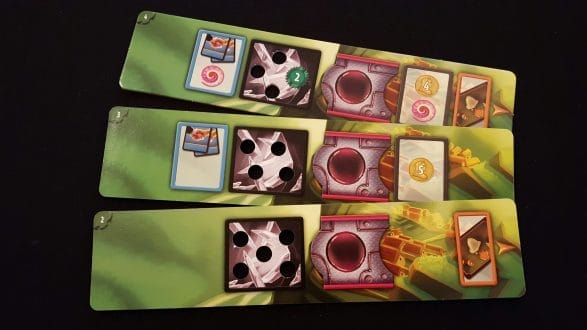
A game of Steam Time lasts five rounds. During a round, players will take turns placing one of their Airships on the board, one at a time, in order to take the action depicted on the space that they chose. This usually results in the player gaining something, whether it be money, Crystals, points etc. That immediate gain is one of the big draws for worker placement games, because it's fun and satisfying to be directly rewarded for each action that you take. Steam Time puts its own spin on worker placement by modifying the actions taken based on how many Crystals the player has in their corresponding Engine when the action is taken. The more Crystals a player has, the bigger the bonus they get when they take the action.
Steam Time also has an interesting spin in that players are forced to follow the Stream of Time. That's a flowery way of saying that players must always place their next worker Airship further up the board than their last. This means that players have to plan out their worker placement, and may be forced to wait to take the action that they really need that round if it occupies one of the top spots on the board. Thankfully, and interestingly, the board itself shifts each round, with the topmost, and hardest to reach, section of the board shifting down into the bottom spot in the next round, while the others shift up one place. The shifting board forces players to adjust their strategy from round to round.
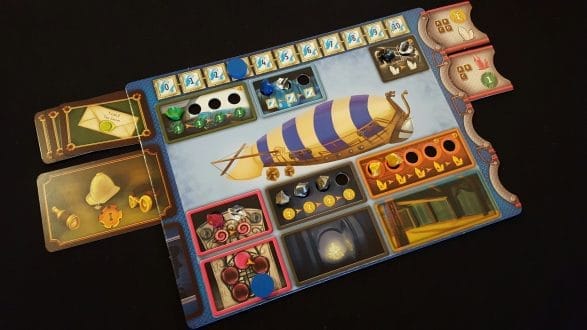
Players can't simply jam as many Crystals as possible into their Airship though, as some Engines, each assigned to a specific color of Crystal, require a cost to place Crystals at certain points. Additionally, a few of the more powerful actions require a cost in Crystals, so players need to constantly balance keeping their Engines stocked as fully as possible, versus the expense to stock the Engines, versus the cost in Crystals that lucrative action spaces demand. This is a really fun implementation of resource management, and enables a ton of potential strategies for players to try out from game to game.
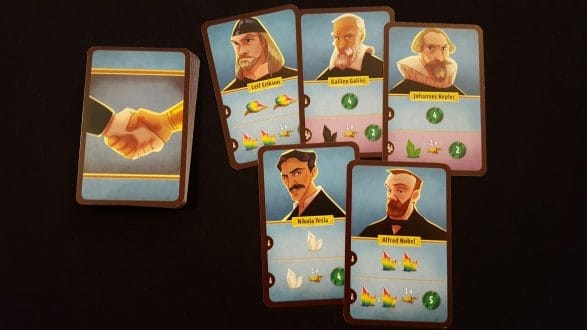
Another fun aspect of Steam Time is that there aren't really any static end-game goals for players to shoot for in order to score points. Some action spaces provide points, but the majority of points that players can earn will come from the Mission cards that players acquire by taking the Mission action space. Missions are dealt out randomly each round, so there isn't a way to predetermine which strategy will be effective until the game is already under way, and so players will need to stay flexible. Players can tailor their strategy around certain Mission types, or simply pick up Missions that compliment their current situation, but either way, players will need to make smart use of Missions in order to win the game. There is no penalty for taking on Missions that you can't fulfill at the end of the game, but each Mission taken eats up one of your three actions each round, so it pays to be efficient.
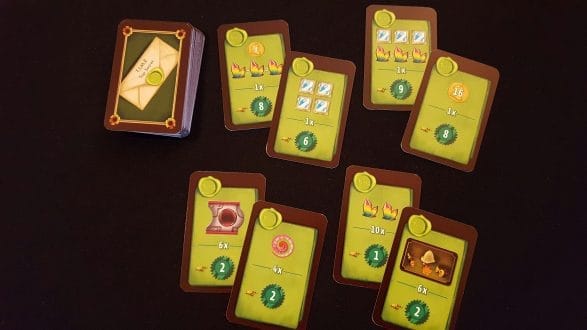
In addition to Missions, the action spaces are tied to Encounters, Crystal deposits, Upgrades, Gold, and Expeditions. The green Mission spaces act as described above, and the green area of the player's Airship grants bonus points based on the number of Crystals it contains. Blue Encounter spaces represent players meeting a famous historical person, come with a semi-random reward, and add Steam to the player's Steam track. Steam can be converted to points by taking the First Player token, and can also be used to change Crystals from one color to another when using them to pay for Upgrades and Expeditions. The black space lets players buy new Crystals and rewards players with clear Time Crystals that act as wild cards, while the Pink space lets players buy permanent ship Upgrades by paying Crystals, and powers up the player's Time Portal, which can let them take a free action. Grey provides money, with a cash bonus, and Orange sends players on an Expedition that, like Pink, costs Crystals and rewards players based on how many Orange Crystals they have in their Analytic engine.
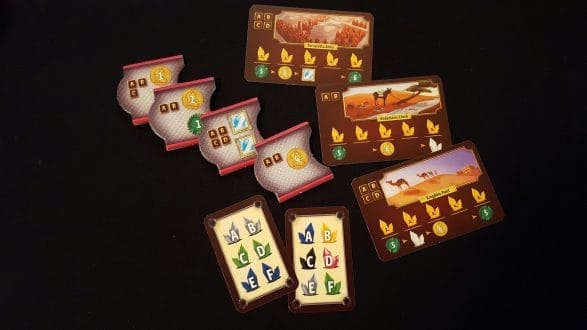
Players will only have 15 actions to take each game, so finding the right balance between gathering resources, spending them, dedicating actions to taking Missions, and working towards those Missions is fun. Steam Time is easy to learn, and once players grasp the fact that they are in control of their own end game scoring, play proceeds rapidly, as each player plots their own course that they hope will lead them toward victory, and, for all of the choices on offer, the game ends up being fairly straightforward. Fortunately, included in the box are two modules that change things up. One is okay, but the other is essential and really adds an awesome layer of strategy to the game.
The Saboteur module allows players to force an additional cost on chosen action spaces each round. Players place their Saboteur at the beginning of the round, and the Saboteur requires that anyone, including the player who placed it, must pay a clear Time Crystal in addition to any regular costs when taking that action. The Saboteurs are okay, and add a bit more player interaction, but all in all they are a give-or-take addition.
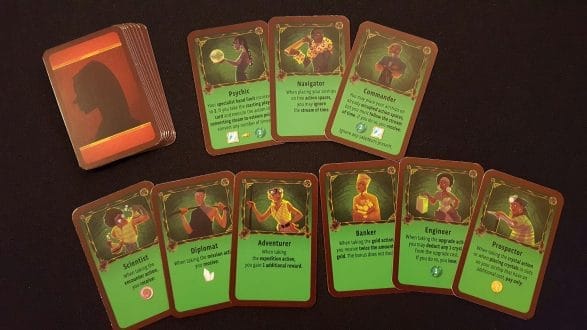
The Specialist module, on the other hand, is awesome. Each player has a deck of nine Specialist cards that allow them to bend, break, or modify the rules in some way, such as allowing a player to violate the normal placement rules for his worker Airships. Each player can only have one Specialist active at a time, and if they switch to another Specialist, they lose access to the previous Specialist for the remainder of the game. Players begin the game with two chosen Specialists available to them, with the others being shuffled together and randomly drawn from that point forward. Some players like to choose their favorite and keep that Specialist active from the beginning of the game, but skilled players will switch from Specialist to Specialist throughout the game to make the most of their special abilities. Getting that timing down just right is tricky though, and it adds a wonderful layer of strategy and fun to an already very fun game.
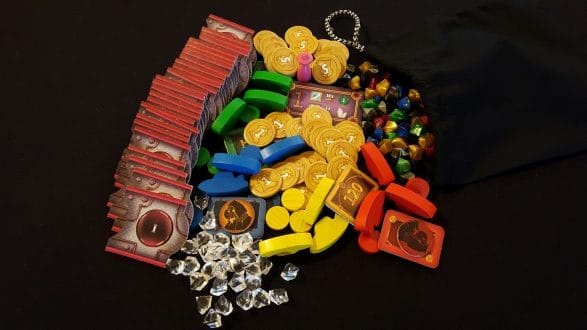
A note on player count: Steam Time plays well with 2, 3, and 4 players. The board layout changes as player count changes, so the tension is still nearly as high for 2 as it is with 4. The edge goes to the 4 player game though, as the tension is provided by the other players, and not manufactured scarcity, but Steam Time is still fun to play with 2 and 3.
A note on game time: Steam Time plays pretty consistently at about an hour for a full complement of players, with the play time dropping about 15 minutes per player as the player count decreases. For as many moving parts as the game has, game setup is rather quick as well, making this a good choice for people who want to play a full worker placement game but may be time limited, or for players who like to play multiple games in one session.
A note on “chrome”: Steam Time has excellent components. The game is very attractive on the table, and the art is all colorful and thematic, even if the theme is merely window dressing. The coloring on the wooden bits is consistent and the cardboard and cards are all well-made. The modular boards fit together well and the Airship boards provide plenty of room for holding all of the components during play.
The bottom line:
Steam Time is a is a very good game that is made great with the use of the included Specialist module. The dual use of crystals to both power your ship's various generators, and to pay for powerful upgrades and expeditions is a great mechanic, and it is extremely satisfying to be able to power up the worker placement rewards with those generators. The ability for players to tailor their end game based on which Mission cards they take is really neat, especially since players will have to decide against a goal to shoot for at game end vs taking a different action for an immediate reward. Steam Time's theme is thin, but it is mechanically sound and easy to learn. Steam Time presents players with a slew of fun, interesting options each turn, and provides a constant sense of gain. That feeling is one reason most worker placement games are so satisfying to play, and Steam Time scratches that itch very well.
Get this game if:
You enjoy worker placement games.
You like games that have a family friendly theme, yet don't feel childish.
You like games that reward smart resource management.
Avoid this game if:
You prefer directly confrontational games.
You dislike points-salad style games.
The copy of Steam Time used for this review was provided by Thames and Kosmos.
Review Summary
Steam Time is a beautifully produced worker placement game that is lite on theme, and easy to learn. The game really finds its stride when played with the included Specialist module.
(Review Policy)Have a tip, or want to point out something we missed? Leave a Comment or e-mail us at tips@techraptor.net
